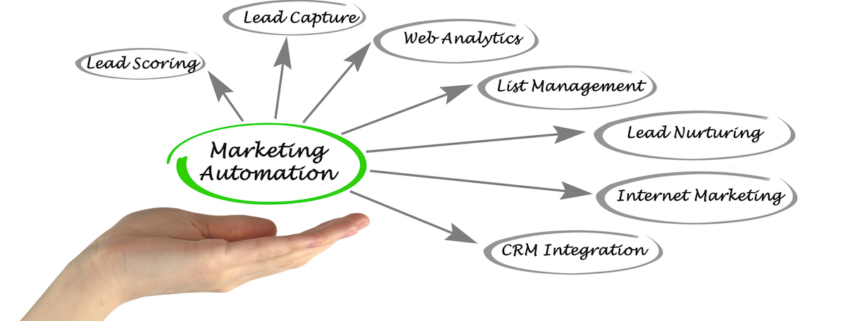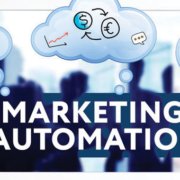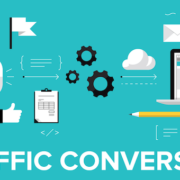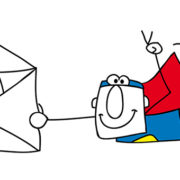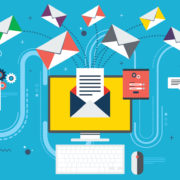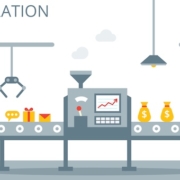Senior Living Marketing Solutions: 5 Must-Haves
You don’t need every marketing solution under the sun for your senior living community to be successful. In fact, sometimes too many bells and whistles can dilute your efforts. That said, there are some must-haves that you shouldn’t skimp on. Below, we discuss five essential senior living marketing solutions that we recommend to all our clients.
1. Senior Living Marketing Solutions: Invest in a Strategy.
Somewhere along the way, the word “strategy” has gotten a bad rap. Probably because strategizing involves stepping back, identifying real objectives, and creating a marketing roadmap for achieving them.
Some might see strategizing as a synonym for slowing down, which is a challenge in our always-on, always-rushed world. And we can certainly appreciate why slowing down can be extremely hard for marketing and sales teams that have a long list of vacancies to fill.
But we’d argue that a sound marketing strategy is needed precisely because it’s so competitive out there. If you approach your marketing willy-nilly—without understanding your buyers or your current website conversions, for example—how can you successfully execute important marketing tasks, like creating content that converts? You can’t measure what you don’t know, right?
The very act of sitting down to create a marketing strategy forces everyone to take a hard look at things like . . .
-
- The community’s overall online presence. What’s working, what isn’t, where are the gaps?
- Buyer personas. Are they accurate? Does the existing content speak to their pain points?
- The community’s reputation in the marketplace, like Google reviews and directory listings.
- Cold-hard conversion numbers, like lead-to-move-in.
And that’s just the beginning. No, it’s not “sexy” work. It’s not fast work, either. And it’s not the type of work that will produce results right away since the work itself involves reviewing, compiling, and planning.
But once the work is completed and a plan is in place based on real intelligence? Get ready for turbo-charged marketing that will deliver reliable results over the long haul.
Doesn’t that sound smarter than just winging it?
2. Senior Living Marketing Solutions: Treat Your Website Like the 24/7 Salesforce That It Is.
Sure, every serious business on the planet has a website nowadays. So setting one up might feel like another box you need to check off your endless to-do list. But your community’s website matters. Why? Because it serves as your 24/7 salesforce.
When people are on the hunt for something—new sneakers, a new car, a new home—their search begins online. This is true even among older adults. Consider the following stats:
-
- Baby Boomers spend more time online than Millennials, and a staggering 92% of Boomers shop online. [Source: The Shelf]
- 75% of all Boomers are on Facebook, and 35% use business-focused networking sites, such as LinkedIn. [Source: Kenshoo]
- Boomers have great attention spans and will read your content! 60% of Boomers regularly read blogs, and 70% percent watch video content online. [Source: The Shelf]
- Boomers are almost as likely as Millennials to own a tablet. [Source: Marketing Charts]
- 68% of Boomers own a smartphone. [Source: Pew Research Center]
For most prospects interested in senior living, your website will serve as their first experience with your community. And like it or not, first impressions still matter. Yes, some folks might land on your Google My Business listing first. Or perhaps they’ll see an ad or a billboard or hear about your community from a friend or family member. But they will end up on your site at some point—and usually multiple times.
Bottom line: Don’t treat your senior living website as an afterthought. Don’t treat it like a box you need to check off. And don’t make it look like every other senior living community’s website.
Instead, approach its creation (and its subsequent iterations) with a sound strategy. Pay attention to analytics that give insights into traffic numbers and conversion rates. And if you outsource, choose an agency that knows what it’s doing when it comes to building senior living websites that get results.
3. Senior Living Marketing Solutions: Let Marketing Automation Do the Heavy Lifting
Your community can’t effectively compete if it doesn’t have a seamless method for nurturing marketing-qualified leads (MQLs) over the long haul. Because here’s the reality all communities are facing right now: Prospects require multiple “touches” before making a decision to move into a community. And when we say multiple touches, we’re talking upwards of 20+ for marketing-qualified leads.
Think about that for a second. Let’s use easy math to illustrate. If your site brings in 100 MQLs a month on average, and these MQLs require a minimum of 20 “touches” before making a decision . . . how on earth can your marketing team manually send that many unique emails to that many different people, month after month, year after year?
| New MQLs Per Month | Touch Points to Convert | Unique Emails Sent |
|---|---|---|
| 100 | 20 | 2,000 |
They can’t. At least, they can’t do it efficiently. Things will fall through the cracks, meaning your community will lose great leads to competitors.
Marketing automation solves this problem. Instead of manually sending lead nurturing emails, you’ll program the system to keep track of where the MQLs are in their journey. The automation’s main purpose is to deliver the right content to the right prospect at the right time.
Marketing automation is no longer a “luxury” of national chains, either. Even a small, independently-owned community must use some form of marketing automation to remain competitive.
Luckily, most reputable marketing automation software offers various tiers. So a larger chain might opt for an enterprise license while a smaller community might choose a nimble, budget-friendly option.
The key (beyond choosing the right marketing automation software) is setting it up properly. This takes work, including a deep understanding of your prospects and their buying journeys. But once set up, marketing automation does the heavy lifting so that your marketing team can focus on other things—like creating compelling content, analyzing results, and doing more of what works and less of what doesn’t.
4. Senior Living Marketing Solutions: Remember to Use Lead Scoring
This goes hand-in-hand with marketing automation. But we find that lots of communities either overlook this point or they don’t take full advantage of lead scoring.
When properly set up and executed, lead scoring provides several benefits:
-
- A real-time view of where leads are in the sales funnel. At a glance, you’ll have a solid sense of your overall pipeline and which leads are nearing decision time. This will help improve sales forecasting.
- Increased efficiency and sales productivity. Sales teams can focus their time on sales-qualified leads.
- A key input to your marketing automation software. Lead scoring will automatically indicate which lead needs to go where. SQLs will be served up to the sales team. MQLs will enter appropriate nurturing campaigns.
In order to work, however, lead scoring requires . . .
-
- Sound strategy. What makes a lead sales-qualified vs. marketing qualified? Do you want to go deeper than simply scoring a lead as an MQL or SQL?
- Smart implementation. You need to make sure lead scoring is set up properly on the backend. Our biggest tip: This requires more than one set of eyes. And you absolutely must test to ensure the leads are being scored as you envisioned they would be.
- Revisiting over time. Marketing automation’s biggest advantage—the automation part—can sometimes be its biggest curse. Too often, marketing and sales teams will “set it and forget it”—for good. You do need to occasionally revisit your lead scoring strategy: Has it changed? Have you learned anything new that could affect how you score leads? And you need to occasionally revisit the actual setup to see if anything has broken along the way.
Again, don’t skimp on this process. Lead scoring is a critical component in successful marketing automation.
5. Senior Living Marketing Solutions: Think Analytics.
Practically everything we do as marketers is measurable. While the number that matters most is move-ins, that’s the finish line. Many milestones exist along the way—important milestones that will help deliver leads to the finish line. And all of those milestones have analytics attached to them.
Think about things like . . .
-
- Website analytics (traffic, landing pages, calls-to-action, etc.)
- Google Analytics
- Social media analytics (specific to each platform)
- Advertising analytics (print, digital, radio, TV)
- Lead analytics (such as MQL-to-SQL conversions and SQL-to-move-in conversions)
- Email marketing analytics (opens, click-through-rates, conversions)
- Call center analytics
- Live chat analytics
And the above isn’t an exhaustive list, either.
Some marketers love numbers. Others hate them. If you fall in the latter group, don’t ignore the analytics because you don’t like them. Instead, consider outsourcing the analysis. A good consultant or marketing agency can help you understand what the numbers are telling you so that you can make informed decisions.
Bonus Solution: Work with a Reputable Senior Living Marketing Agency
Because marketing is SO involved, it can be challenging for marketing and sales teams to manage everything on their own. Luckily, there’s a solution for that: outsourcing some of the work to an agency like ours. We know senior living. We know marketing. Let’s talk about your community’s specific marketing needs.

